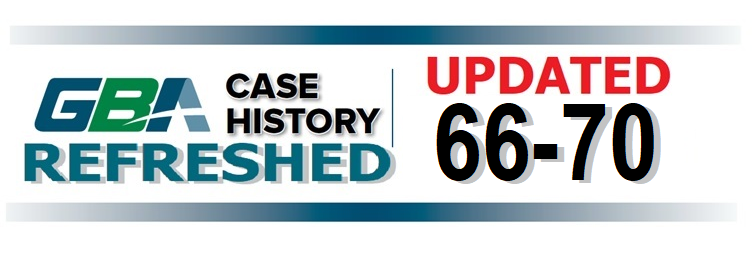5 More Case Histories Refreshed
GBA Publications Committee
Learn from others. Don’t repeat the mistakes 
of the past! GBA Case Histories are being used by our members for loss preventiondiscussions in support of professional development and mentoring. That is why GBA case histories are so valuable, and why GBA is updating them all, while adding new ones, too. Five more Case Histories have been re-issued.
CASE HISTORY NO. 66 (download)
By attaching the word “standard” to a recommended practice it had developed, a local contractors group gave the
document a status it did not merit: it was not developed using ANSI methods;it was not generally followed; and it was not incorporated into any local codes. Nonetheless, its existence gave an attorney the ability to confuse a trier of fact, encouraging the developer and a design firm to settle a meritless claim rather than contest it at trial.
CASE HISTORY NO. 67 (download)
A Member Firm’s written agreement with a contractor included a limitation of liability (LoL) provision. After the Member Firm completed its services, the contractor asked it to do more, and the firm agreed. When problems arose from the additional services, the contractor alleged that the Member Firm was at fault, and that the LoL did not apply, because it was part of the written agreement and not part of the oral agreement for the additional services.
CASE HISTORY NO. 68 (download)
The Member Firm was retained by an owner to design a landfill and perform “related services” that included a variety of marketing functions. When the owner decided to auction the site, it expected another of the Member Firm’s clients to be the high bidder. Instead, the other client offered a surprisingly low price. Although no evidence of collusion between the Member Firm and low bidder existed, the owner assumed that collusion occurred and sued.
CASE HISTORY NO. 69 (download)
Although a Member Firm qualified its clean-up cost estimate of $525,000-$675,000, the qualifiers were not put into the form of clear warnings. Accordingly, when the actual costs came in at more than $2.8 million, the client sued. The contract between the Member Firm and its client included a limitation of liability (LoL). The client attempted to get around the LoL’s restrictions by asserting damages for gross negligence and breach of fiduciary responsibility. When a judge dismissed those allegations, the LoL held sway, but only after each side spent considerably more than the limitation involved.
CASE HISTORY NO. 70 (download)
“The design is more than sufficient to keep the ship permanently moored to the pier,” the dry-dock engineer told the restaurateur, more or less warranting design quality for life. But the dry-dock engineer had not counted on the fierce winds of a hurricane. The ship, being used as a cocktail lounge, slipped its moorings and sank, sinking, too, its owner’s $12 million investment. Insurance paid the damages, but retained the right to sue the dry-dock engineer. It did and, 22 years after making his statement, the dry-dock engineer was told by a judge that he had breached an express warranty and had to pay up. Because insurance does not cover breach of warranty, the dry-dock engineer was forced out of business.
GBA Case Histories are FREE to all Members. Access all GBA’s Case Histories HERE[/vc_column_text][/vc_column][/vc_row]